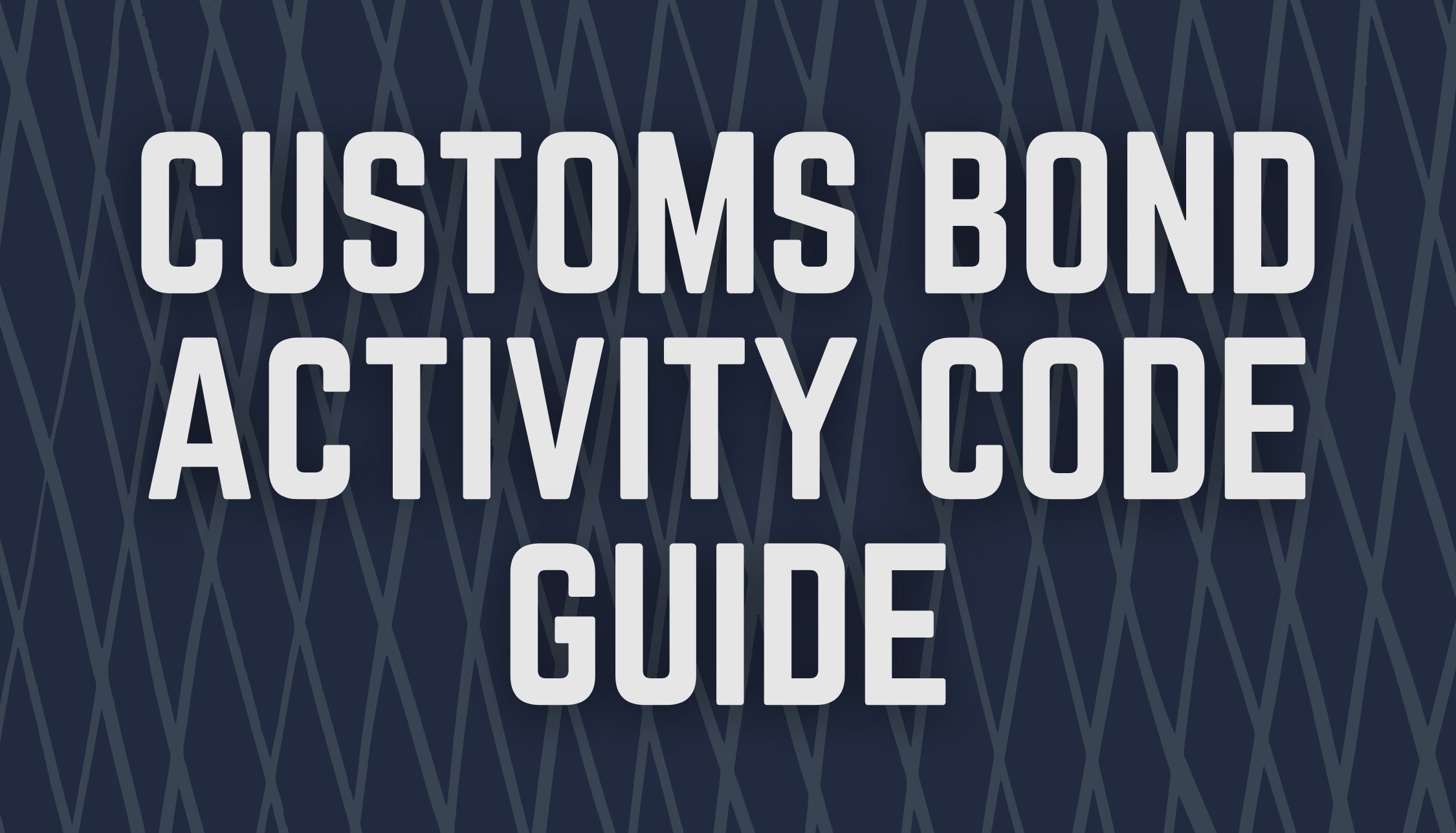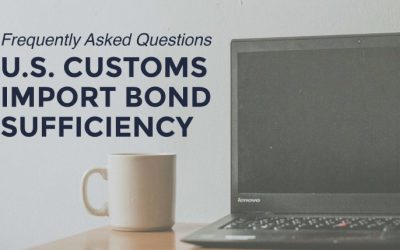There’s an array of activity codes associated with US Customs bonds. The most common bonds are activity code one importer bonds; however, the other types of Customs bonds play a crucial role in global trade.
Activity Codes for Types of U.S. Customs Bonds
Activity Code 1 – Importer Bond
Activity Code 1a – Drawback Payments Refund
Activity Code 2 – Custodian of Bonded Merchandise
Activity Code 3 – International Carrier
Activity Code 3a – Instruments of International Traffic
Activity Code 4 – Foreign Trade Zone
Activity Code 5 – Public Gauger
Activity Code 6 – Wool and Fur Products Liability Act
Activity Code 7 – Bill of Lading
Activity Code 8 – Detention of Copyrighted Material
Activity Code 9 – Neutrality
Activity Code 10 – Court Costs of Condemned Goods
Activity Code 11 – Airport Security Bond (ASB)
*The bonds in bold are offered by Trade Risk Guaranty.
Customs Bond Activity Codes Offered by Trade Risk Guaranty
Activity Code 1 – Import Bond
A Customs Import Bond is a financial guaranty between the Insurance/Surety Company issuing the Customs bond, the Importer of Record (also known as the Principal on the bond), and Customs & Border Protection (CBP).
The import bond guarantees that CBP can collect all duties, taxes, fines, or penalties associated with importing into the United States. CBP will collect payment from the Insurance/Surety Company that issued the bond if the importer cannot pay their dues. CBP requires all importers to file an Import Bond to clear their entries, even if the goods are duty-free.
The Import bond amount is calculated based on the duties and fees associated with the imported goods. In most cases, the bond amount must be at least 10% of the total duties and taxes paid to CBP annually at a minimum of $50,000.
Activity Code 1A – Drawback Payment Refunds Bond
This type of Customs bond allows an importer to obtain a refund of 99% of the duties paid on imported goods upon proving that they exported these goods back out of the United States.
As with all Customs bonds, should your bond amount be inadequate according to Customs regulations, Customs will advise the importer and the surety company to increase the bond amount. They will give a reasonable amount of time to do so. The bond amount for a Drawback Bond is the average of all estimated drawback claims in a 12 month period.
Activity Code 2 – Custodian Bond
A Custodian bond covers the activities of bonded merchandise warehouses, carriers, cartmen, and container stations. These business types are responsible for merchandise that has not yet been “entered” into the commerce of the United States and for which duties are still due. Such goods are referred to as being “in-bond.”
The proper bond amount for a custodian bond is determined by the District Director of Customs, depending on average loads and types of commodities to be in the care of the bondholder. The minimum Activity Code 2 bond amount accepted by Customs is $50,000.
As with all Customs bonds, should your bond amount be inadequate according to Customs regulations, Customs will advise the importer and the surety company to increase the bond amount. They will give a reasonable amount of time to do so.
Activity Code 3 – International Carrier Bond
An international carrier bond ensures operators properly manifest all goods and passengers they carry, pay for Customs officers’ overtime services, and comply with all regulations related to the clearance of their vehicles.
The bond secures activities related to the entry or clearance of vessels, vehicles, or aircraft arriving from any place outside the Customs territory of the United States. The bond limit of liability amount shall be fixed in an amount the district director may deem necessary to accomplish the purpose for which the bond is given, but not less than $25,000.
In addition, the district director has full responsibility for setting bond limits at higher amounts, up to $250,000 as deemed necessary, for carriers with past narcotics violations or those originating from high-risk drug areas.
As with all Customs bonds, should your bond amount be inadequate according to Customs regulations, Customs will advise the importer and the surety company to increase the bond amount. They will give a reasonable amount of time to do so.
Activity Code 4 – Foreign Trade Zone (FTZ) Bond
A Foreign Trade Zone is considered non-U.S. territory for Customs’ purposes, and foreign goods placed into the FTZ may be manufactured, manipulated, repacked, or exported without paying duties. The continuous FTZ bond has been amended to secure Importer Security Filing.
Activity Code 11 – Airport Security Bond (ASB)
An Airport Security Bond (ASB) is a U.S. Customs bond needed for outsourced service companies to enter secured areas of airports (like cleaning services not employed by the airlines to clean planes or maintenance individuals not employed by the airlines to fix something).
Airport Security Bonds also apply to the employees of any business that operates beyond the security checkpoint within the airport. For example, restaurants, gift shops, bookstores, etc.
The minimum size of an Airport Security Bond is $10,000. This is usually based on a calculation of $1000 per employee with Customs security area access. This amount may be adjusted at the discretion Port Director of the International Airport where the bond is filed.
Who Needs an Airport Security Bond?
- Service Companies
- Restaurants
- Coffee Shops
- Vending Machine Operators
- Independent Retail Stores
- Custodial/Janitorial/Housekeeping firms
- Construction Companies
- General Contractors
- Sub-contractors
- Excavation Contractors
- Professionals
- Architects
- Engineers






![[Webinar] How Could Changes to De Minimis Impact Your Company?](https://traderiskguaranty.com/trgpeak/wp-content/uploads/2025/05/trg-how-de-minimis-impacts-customs-bond-webinar-400x250.png)
